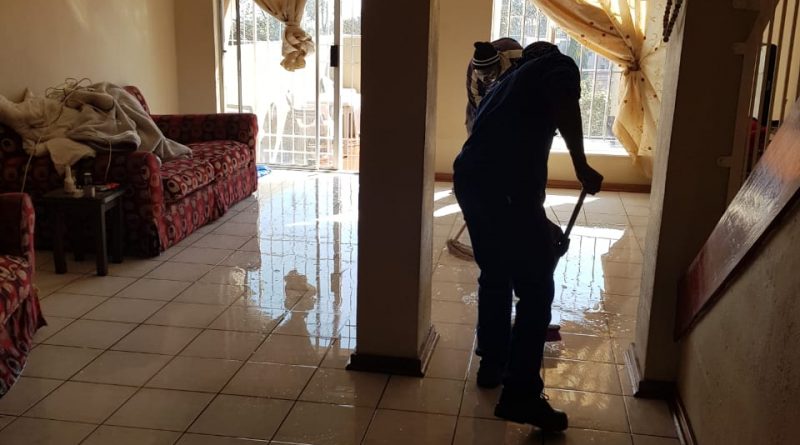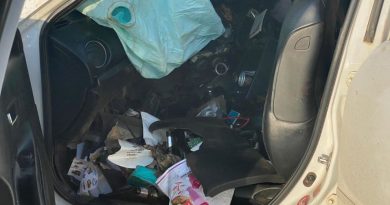Ombudsman warns property owners to be cautious of water damage claims
As South Africa heads into a new season, it is important we prepare for the inevitable rain and possible damage that come with the season. According to the South African Weather Services, we can expect 3 to 8 days of rain during the month of October. While this might seem like an average rain forecast, it is imperative we remember that a single day of rain can bring torrential floods that cause great water damage.
To prepare for this rainy season, everyone must be familiar with what constitutes claimable water damage with insurers and what does not. The water damage must be sudden and unforeseen – not gradual or over time or involve wear-and-tear. There must be actual damage, which means one cannot claim for carpets or clothing that have become wet, unless the wetness resulted in damage, including change in appearance or unsightly marks or a bad odour, for example. One can also not claim for mould because it occurs over time. Furthermore, the cause of the damage cannot be inherent vice, defective design or workmanship, or lack of maintenance.
It is important to note that carrying out repairs before the damage has been validated may lead to declined claims. Should it be necessary to conduct urgent or emergency repairs, proper records or proof must be maintained for validation purposes. If the loss or damage cannot be validated, the claim may be declined.
Case Study: Water Damage
In a case OSTI dealt with recently, Mrs. M submitted a claim to the insurer for storm-related damage to the insured property. The insurer was not convinced that the claim fell within the ambit of cover, thus the claim was rejected. Dissatisfied with the outcome and believing that the insurer was reneging on its obligation, Mrs. M approached OSTI to compel the insurer to settle the claim.
In her application for assistance, Mrs. M indicated that her property was damaged due to a storm and heavy rains. The roof was leaking.
The insurer rejected the claim on the basis that the proximate cause of the damage was a lack of maintenance.
The relevant policy exclusion the insurer relied on is as follows:
“General Exclusions
This section is applicable to the entire policy.
You will not be covered for loss or damage caused by:
Servicing, maintenance, cleaning, repairing, restoring, dyeing, bleaching or alteration”
To substantiate its stance, the insurer referred to the damage report prepared by its appointed assessor. The assessor had found no evidence of storm damage but that the asbestos roof coverings were not maintained, allowing water to penetrate through the unpainted roof sheeting. The assessor expressed the opinion that the roof would not have leaked had it been maintained. The assessor recommended the replacement of the roof sheeting to remedy the situation.
Whilst Mrs. M did not dispute that the roof was not maintained, she argued that they moved into the property 8 months before the claim was submitted, hence she should not be held responsible for the unmaintained condition of the roof. It was Mrs. M’s further contention that the insurer should have assessed the property and noted any defects before proceeding to collect premiums.
OSTI could not grant the relief sought by Mrs. M. The insurer’s decision to reject the claim was upheld as it was made in line with the policy terms and conditions. Mrs. M conceded that the property was not maintained. Her own version also suggested that the loss was not covered by the policy as she attributed her loss to heavy rains (in the plural, meaning multiple events). The insurer further demonstrated, relying on the assessor’s report, that the unmaintained roof was material to the loss. Consequently, OSTI could not fault the insurer’s stance. Mrs. M’s contentions that the insurer had not conducted any inspections is irrelevant as the policy clearly states that no cover will be provided where there is lack of maintenance.
OSTI pointed out to Mrs. M that the terms of the policy governing the contractual relationship between the insurer and Mrs. M do not require the insurer to assess the property before placing it on cover. It is the insured’s responsibility to ensure that the property is regularly maintained.
Mrs. M’s case illustrates that the mere fact that a policyholder pays a premium does not necessarily mean that all claims submitted will be accepted. An insurer is entitled to refute a claim where it can demonstrate, on a balance of probabilities, that the damage is attributable to the unmaintained condition of the property.
Depending on the type of policy, in the event of a claim, an insurer may appoint an expert to establish whether the policyholder discharged the responsibility of attending to the necessary maintenance, and if not, whether the cause of the damage can be attributed to such a failure.
Even if an insured event, such as a storm or rain, did occur and caused water damage to the insured property, in certain instances, similar to Mrs. M’s case, an insurer may justly repudiate such a claim. Should an insurer rely on a lack of maintenance to reject a claim, the insurer’s evidence will have to show on a balance of probabilities that the proximate cause of the damage is the lack of maintenance of the property. Such evidence can be in the form of a damage report and photographs.
Certain policies include guidelines as to how a policyholder can make certain that the insured property is maintained. A policyholder need not physically assess the property in person before purchase or attend to the maintenance, there are service providers that can do this on behalf of the policyholders.
Where maintenance has been carried out, it is advisable to request invoices from the service provider, containing a detailed description of the work done. Similarly, when purchasing property one may request for an assessment to be carried out before purchase to ensure that the property does not have defects, and that where defects have been noted, they are rectified.
Tips for consumers during the rainy season:
- It is a good idea to conduct inspections and preventative maintenance at the insured property prior to the rainy season i.e., clear gutters and downpipes of any debris, leaves and other material that may have clogged them during the winter months, apply a new coat of paint, repair any items like tiles that may be broken and correct any other issues that may require attention, like waterproofing.
- A lot of car accidents occur during the wet seasons due to worn tyres. Worn tyres must be replaced to avoid claim being declined. Other maintenance must also be conducted.
- It is advisable to take care of the insured property as if it were not insured and not be careless with it purely because the insurer will carry any loss experienced as this may just be the reason why your claim is declined.
- It is also important to always understand what losses are covered, and what exclusions and limitations apply as per the terms and conditions of cover.
- Paying premiums on time and compliant in other respects also means that you are not likely to experience a rude awakening when claiming.




